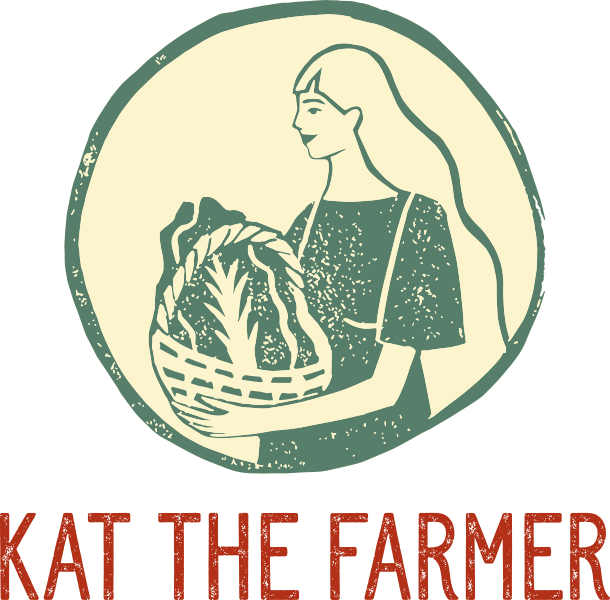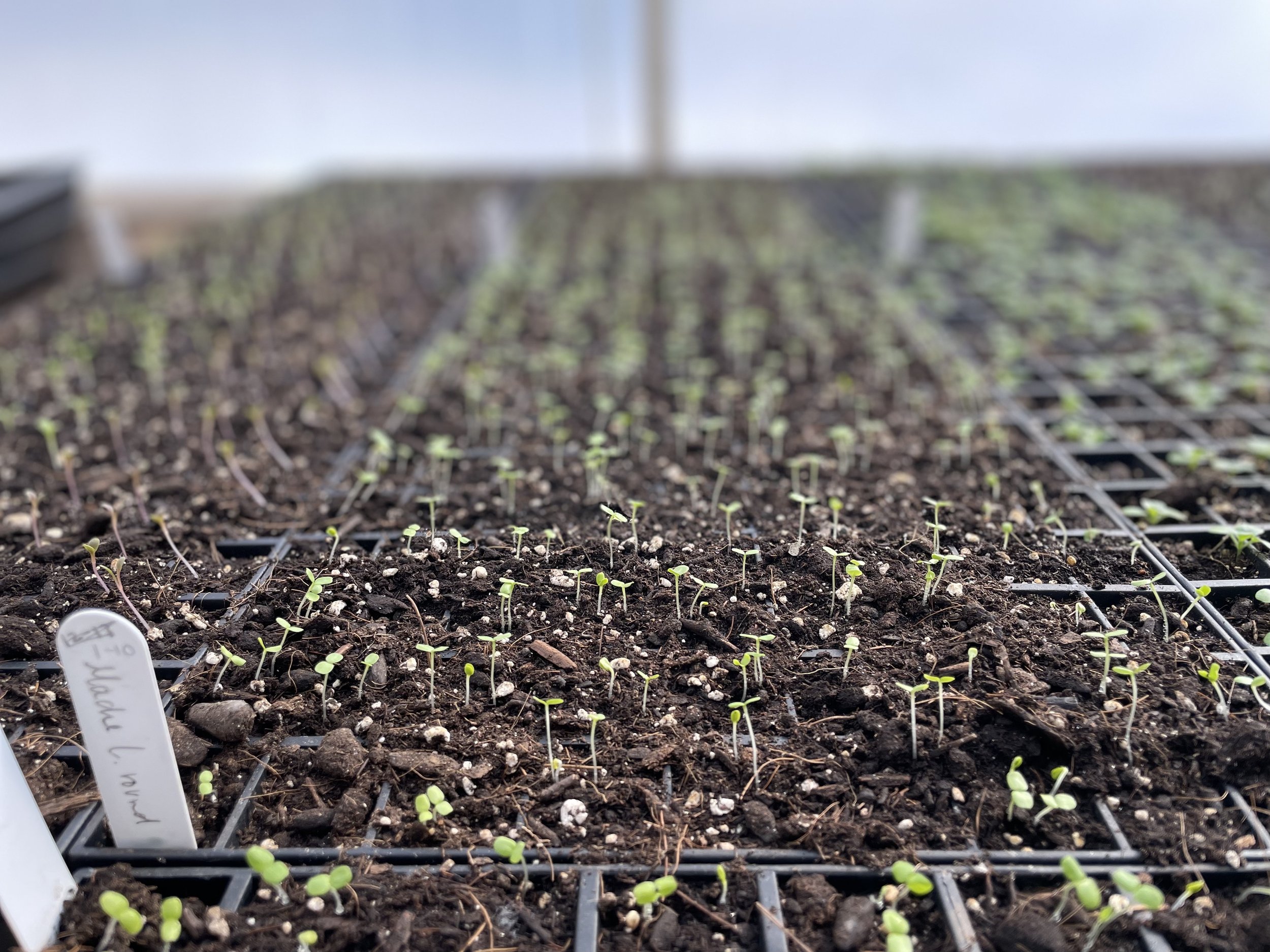Can You Transplant Mâche?
A few years back I started growing Mache (aka ‘corn salad’) from seed. I took the seeder out to the prepared bed and drilled the seeds at about the first week of September here in Zone 7. I got my first harvest of tiny clusters the following April, and took the unique crop to market.
However, each year being in production means that my crop plan and its successions get tighter and tighter, and there is less room for the more ‘experimental’ crops to fit in.
Yet the customers who tried Mache for the first time loved it, and those who already had an affinity for it were even happier to see it at market.
Flavor Description:
like a lettuce with notes of corn silk, green beans, and rose petals.
So I wondered if I could save the space in the fall, and still have an early spring harvest of Mache to bring to market? This is when I began to wonder if I could transplant Mache instead.
After trialing it in the tunnel and uncovered in the field I am a total convert to this process. The Mache seems to be better quality, less likely to go to seed suddenly and fills a gap in the growing plan when field space is not fully utilized.
Seeding Time
To seed your own mache for transplants you’ll have only a handful of varieties to choose from on the market. ‘Vit Mache’ and ‘Large Leaf Round’ are the two that I have tried out. The latter being much larger and slightly lighter shade of green.
Here in Zone 7, I start seeds in flats in the greenhouse around the first week of January. They take about 2-3 weeks to germinate at 65F on the heated benches. The seeds are geared to germinate at 45-68F.
I like to select a small cell plug tray like a 128, 200, 144 cell tray and seed 2-3 seeds per cell.
Being one of the first trays in the greenhouse and absolutely delectable to mice (maybe they think its corn?) its important to protect your trays before, during and even after germination until the plants are well established. I do this by covering with an inverted mesh tray over night.
The trays will be in the greenhouse for about 2 months, and I dont worry about thinning them. You’ll want to attempt to harden these off if you are transplanting into the field, but they are inherently very hardy plants.
Planting Time
Mache, planted in the field after about 3 weeks.
Around March 1st the transplants can get set into the field, unprotected. I lay out a bed with 5 rows 8’’ apart with plants set at 6’’ apart in-row. I plant the entire cluster, or single plant in each spot.
Harvest Time
Clamshell of Mache, ready for market
“Cluster Harvest” of Mache at peak harvest time
“Leaf Harvest” of Mache
If you choose to plant in a tunnel, the harvest will come a little earlier, and be a little more brief, but outdoor plantings will mature throughout the month of April. The exact timing depends on how quickly spring warms up or doesn’t that season.
The little clusters can be harvested as a leaf only harvest (by cutting above the growing point) or as a cluster (by cutting right at the soil line.)
I find that by May arrives, the plants start to elongate and form flowering stalks that can readily go to seed in your soil and become an issue if you dont harvest well before this point.
May 1st: This Mache is past its prime and is sending out flowering stalks
I’ll be honest, the yield from a crop of mache is underwhelming, but it does fill beds a time at a time of year when there is very little competition. Its quick in, and quick out. Plus this unique, very seasonal, and hard to find salad green can bring a premium.
One 60’ bed planted with mache in this way became a harvest of about 50 clamshells (.2lbs each).
The plants seem to be unbothered by early spring dumps of snow, frosts, and will be a part of my early spring crop plan for many years to come.
Get the Pre-filled Crop Plan Template - Kat's Crop Plan Template with 35 Annual Crops pre-filled (including salad mix!) - Retail Pricing Suggestions - Yield Projections - Suggested Plant Spacings for 40'' wide bed - Earliest and Latest Indoor & Outdoor Planting Date guide - Generates a Greenhouse Seed Chart, Field Seeding Chart, Seed Order Chart, and Total Revenue Projection Use it as a starting point for your own plan.






